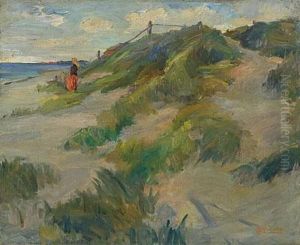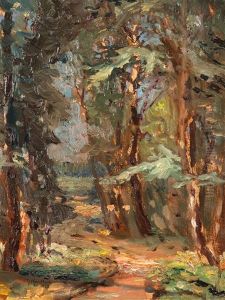Georg Kaulbach Paintings
Georg Kaulbach was a German painter and graphic artist, born in Munich in 1891. He was part of the Kaulbach family, a lineage with a rich heritage in art, which significantly influenced his career and artistic development. His great-grandfather, Wilhelm von Kaulbach, was a renowned painter, known for his monumental works and as a director of the Academy of Fine Arts in Munich. This artistic legacy provided Georg with an environment steeped in the traditions and techniques of painting from a young age.
Kaulbach's work was diverse, covering a range of subjects including landscapes, portraits, and genre scenes. He was particularly known for his ability to capture the nuances of light and shadow, imbuing his paintings with a sense of realism and depth. Despite this, he also experimented with more expressive styles, reflecting the broader trends in German art during the early 20th century, including movements such as Expressionism.
Throughout his career, Kaulbach navigated the tumultuous landscape of German history, including both World Wars. The impact of these events on the art world was significant, with many artists grappling with the societal changes and personal losses wrought by the conflicts. Kaulbach's work from this period reflects a somber tone, with a focus on themes of loss, resilience, and the beauty of everyday life amidst chaos.
After World War II, Kaulbach continued to paint, though the art world had dramatically changed. The rise of abstract and conceptual art movements pushed representational artists like Kaulbach into a more traditionalist category. Despite this, he maintained a dedicated following and continued to exhibit his work, both in Germany and internationally.
Georg Kaulbach's contribution to German art is marked by his adherence to traditional techniques while also engaging with the contemporary themes of his time. His legacy is preserved through his works, which remain a testament to the enduring quality of representational art. He passed away in 1971, leaving behind a body of work that continues to be appreciated for its craftsmanship and emotional depth.

